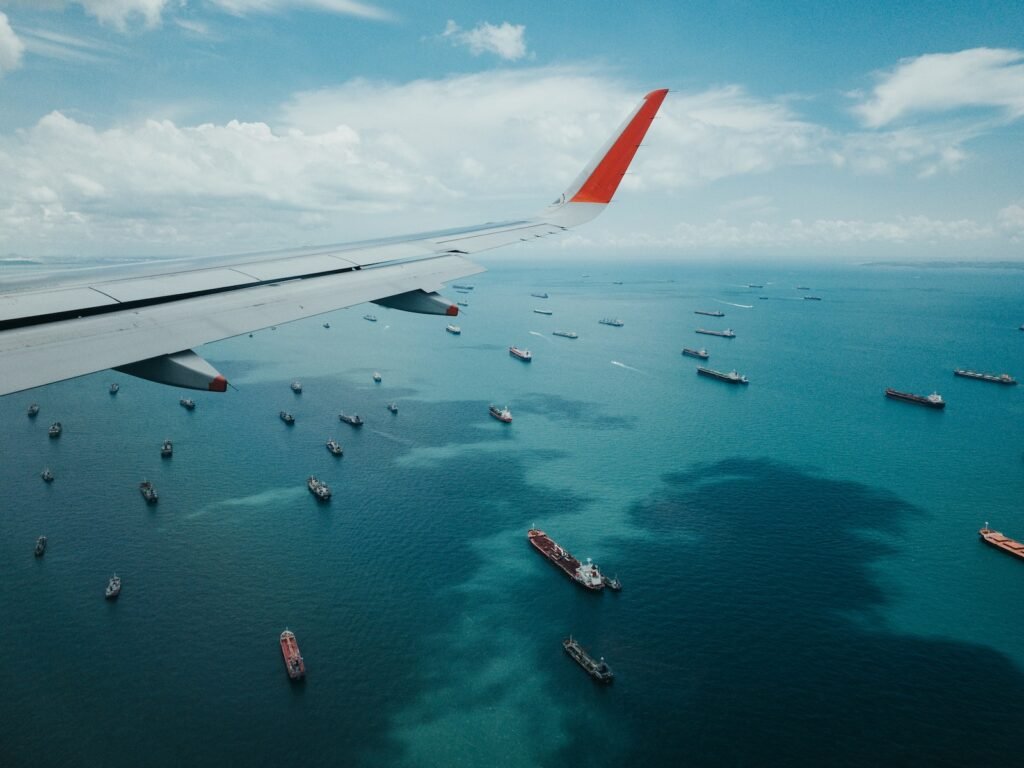Jump Ahead To :
Introduction To Pre-Shipment
Pre-shipment, in simple terms, refers to the activities and processes that occur before goods are shipped or exported. It encompasses a range of tasks such as documentation, quality control, packaging, labeling, and transportation arrangements. Essentially, pre-shipment is the crucial phase where all necessary preparations take place to ensure smooth and efficient delivery of goods to their intended destinations.
During this stage, businesses undergo various procedures to comply with legal requirements and meet customer expectations. Whether it’s preparing export declarations or conducting inspections to ensure product compliance with regulations and standards, pre-shipment activities play a vital role in safeguarding the integrity of both the merchandise and the exporting company.
Importance Of Pre-Shipment In Various Industries
Pre-shipment holds immense importance across diverse industries for several reasons. Firstly, it helps businesses maintain a high level of quality control by ensuring that products meet specific standards before they leave the premises.
This is particularly significant for industries dealing with perishable goods or those subject to strict regulations like food and pharmaceuticals. Moreover, pre-shipment is crucial for proper documentation and record-keeping purposes.
Exporters must accurately complete relevant paperwork such as commercial invoices, packing lists, bills of lading/airway bills, and certificates of origin. These documents not only serve as proof of ownership but also facilitate customs clearance at both ends of the transaction.
In addition to quality control and documentation aspects, pre-shipment plays an essential role in logistics planning. Proper packaging techniques are employed during this phase to protect goods from damage during transit.
Adequate labeling ensures that items are handled correctly throughout their journey while also aiding in identification at customs checkpoints. Overall, whether you’re involved in manufacturing or retail trade or any other industry requiring international shipping or exportation services, understanding and executing effective pre-shipment practices is crucial for ensuring smooth, efficient, and successful business operations. Now that we kind of know the basics , let’s look at each aspect of the procees in detail.
Understanding the Pre-Shipment Process
When it comes to preparing goods for shipment, there are several key documents that play a crucial role in the pre shipment process. These documents not only ensure smooth transit but also serve as vital records for customs clearance and any potential disputes. Let’s take a closer look at some of these essential documents.
Commercial Invoice
The commercial invoice is perhaps one of the most important documents in international trade. It provides a detailed breakdown of the goods being shipped, including their description, quantity, value, and applicable charges. This document serves multiple purposes: it acts as evidence of the transaction between the buyer and seller, aids in customs valuation procedures, helps calculate import duties and taxes, and assists in obtaining payment from the buyer.
Packing List
A packing list is an itemized inventory that outlines each item included in a shipment. It includes essential details such as product codes or SKU numbers, quantities, weights, dimensions (if applicable), and packaging information. This document plays a vital role at various stages of the shipping process—facilitating customs inspections by providing comprehensive information about the contents of each package while helping receivers verify that they have received all items listed on the packing list.

Bill Of Lading/Airway Bill
The bill of lading (B/L) or airway bill (AWB) serves as a contract between the shipper (seller) and carrier (transportation company) for both domestic and international shipments. It acts as evidence that goods have been received by the carrier for transportation to their specified destination.
The B/L is typically used for sea freight shipments while an AWB is used for airfreight shipments. These documents contain critical information such as consignor and consignee details, port of loading and discharge, vessel or flight information, goods description, and special handling instructions.
Certificate Of Origin
The certificate of origin is a document that affirms the country in which the goods were manufactured. It is an essential requirement for customs clearance as it helps determine eligibility for preferential tariff rates under various trade agreements.
This document provides evidence to support claims of origin and certifies compliance with rules of origin criteria established by importing countries. The certificate must be completed accurately and signed by the authorized party who can verify the product’s origin.
Quality Control and Inspection Before Shipment
Ensuring that products comply with applicable standards and regulations is crucial before shipping them to customers or partners. Quality control measures help maintain consistency in product quality, protect consumer safety, enhance customer satisfaction, and uphold a company’s reputation. Here are some key aspects to consider regarding quality control and inspection during the pre shipment stage:
- Ensuring product compliance with standards and regulations Before shipping goods, it is vital to ensure they meet all relevant standards and regulations imposed by both exporting and importing countries. These standards cover various aspects such as safety, performance, labeling requirements, environmental impact, etc. Compliance can involve obtaining certifications or testing documentation that proves adherence to specific requirements.
- Conducting inspections and tests Depending on the nature of the products being shipped, inspections may involve visual checks, measurements, functionality tests, or laboratory analysis conducted by specialized third-party agencies or internal quality assurance teams.
- Packaging and labeling considerations Choosing appropriate packaging materials ensures that products remain undamaged during transit from manufacturer to receiver. It should be sturdy enough to withstand handling processes, stacking, and potential external hazards. Also, don’t forget proper labeling!
Preparing Goods for Shipment
Once the products are ready to leave your premises and eager to reach the hands of customers, it is crucial to ensure they are properly secured for transportation. One of the first considerations is selecting suitable shipping containers that can withstand the rigors of the journey.
These containers come in various shapes and sizes, ranging from standard cardboard boxes to sturdy wooden crates or metal containers. The choice of shipping container depends on factors such as the nature of your goods, their fragility, weight, and dimensions.
Fragile items may require additional protective measures such as cushioning materials like bubble wrap or foam inserts. It’s important to remember that investing in sturdy and appropriate shipping containers will not only protect your products but also help minimize the risk of damage during transit.
Palletizing or Crating goods
When it comes to preparing goods for shipment, palletizing or crating can significantly enhance their protection and facilitate handling throughout the logistics process. Palletizing involves placing your products on a pallet—a flat transport structure that allows for easy movement using forklifts or pallet jacks.
This method ensures stability during transportation and enables efficient loading and unloading at warehouses or distribution centers. In cases where your goods require extra protection due to their size, shape, or delicate nature, crating is an effective solution.
Crates are custom-built wooden structures designed specifically to secure irregularly shaped items or those with high value that demand utmost care during transit. They provide added stability by enclosing the goods within a robust framework that protects against external impacts.
Documentation for customs clearance
In order to successfully navigate international borders and comply with customs regulations, it is imperative to have all necessary documentation prepared in advance. This ensures a smooth customs clearance process, preventing any delays or complications that could disrupt the timely delivery of your goods. Two essential documents in this regard are export declarations and the provision of necessary customs documents.
Export declarations involve submitting accurate and detailed information about your exported goods to the relevant authorities. This includes details such as the nature of the products, their value, origin, destination country, and any applicable export licenses.
It is important to ensure that all information provided is accurate and in line with the requirements of both the exporting and importing countries. Additionally, providing necessary customs documents is vital for a seamless transition through customs checkpoints.
These may include commercial invoices, packing lists, certificates of origin, permits/licenses (if applicable), and any other specific documentation required by the importing country’s customs authorities.
Transportation and Logistics in Pre Shipment Stage
When it comes to transporting goods before shipment, there are several modes of transportation at your disposal.
One of the most commonly used modes is road transport. This option offers flexibility and convenience, especially for domestic shipments. It allows for direct delivery from the manufacturer or supplier to the intended destination, minimizing handling and potential damages. It is ideal for smaller shipments or time-sensitive goods that require quick delivery.
Another mode of transportation widely utilized in pre shipment stage is air freight. This option offers speed and efficiency, making it highly suitable for time-critical shipments or products with short shelf lives, such as perishable goods or pharmaceuticals. It also provides a global reach with extensive networks connecting major airports worldwide.
For larger shipments involving international trade, sea freight becomes an attractive option due to its cost-effectiveness and capacity to accommodate significant volumes of goods.
Although sea freight may have longer transit times compared to air freight, it offers various container sizes suitable for different types of cargo. Additionally, sea freight provides access to many ports around the world, facilitating extensive global trade opportunities.
Selecting the right logistics partner
Choosing a reliable logistics partner is crucial in ensuring smooth pre shipment operations. Several criteria should be considered when making this decision:
- Experience: Look for a logistics provider with extensive experience in handling similar types of shipments and familiarity with your industry requirements. 2) Network: Assess the provider’s network coverage to ensure they can efficiently handle transportation across different regions and countries.
- Track record: Research the reputation and track record of potential logistics partners by checking reviews from past clients or seeking recommendations from trusted sources within your industry. 4) Services offered: Evaluate the range of services the logistics company offers, including customs clearance assistance, warehousing options, and insurance coverage.
By carefully considering these criteria, you can select a logistics partner that aligns with your specific needs and provides reliable support throughout the pre shipment stage. Remember that a well-chosen logistics partner can significantly contribute to the success of your supply chain and ensure timely delivery of goods to their intended destination.
Conclusion
Understanding the significance of pre shipment processes lays a solid foundation for successful international trade operations across various industries. By ensuring accurate documentation and preventing common issues related to packaging and labeling, businesses can minimize delays and avoid costly mistakes in global supply chains.
By adopting meticulous attention to detail throughout this stage, companies can enhance their reputation for reliability while also protecting their products from potential damage or loss. With careful planning and adherence to best practices at the pre shipment stage businesses can confidently navigate international trade waters knowing their goods are well-prepared for safe and timely delivery. If you are interested in learning about product distribution as a whole , checkout our full guide on it !






